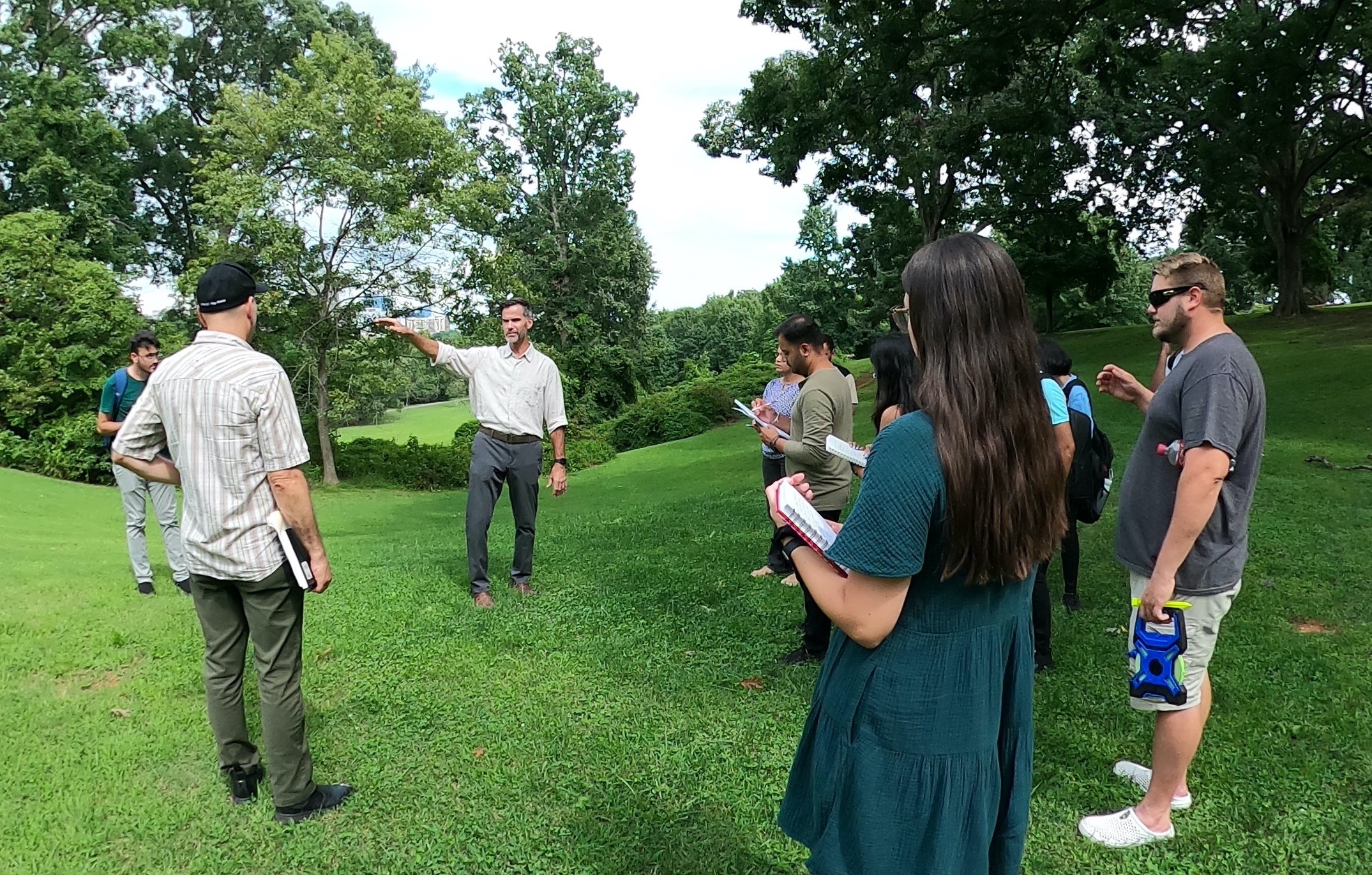Teaching Resilience and Regeneration
Photo by Britany Bagan
Every class is an opportunity to explore new ways of making buildings more resilient to the effects of climate change and more regenerative in sharing the clean energy they produce. Today, my students and I explored Dorothea Dix Park in Raleigh. The 300-acre park, now in the planning stages, has been called the most important new park in the US.
Students in my graduate architectural design studio will design a new Native Plants and Wildlife Research and Education Center for the park. Their ideas, while only “on paper,” could help inspire more resilient and regenerative design for all the park’s buildings and amenities.
So, on the first day of class, we went to the park and studied its ecosystem. How does water flow across the site? Do the students feel how the wind increases as we walk up the hill? Do they hear the hawk screeching in the oak tree? Their observations form the basis for their design, and the better they understand the site as a web of interconnected things and processes the better they will be able to respond as designers seeking to improve the ecosystem through their design interventions.
